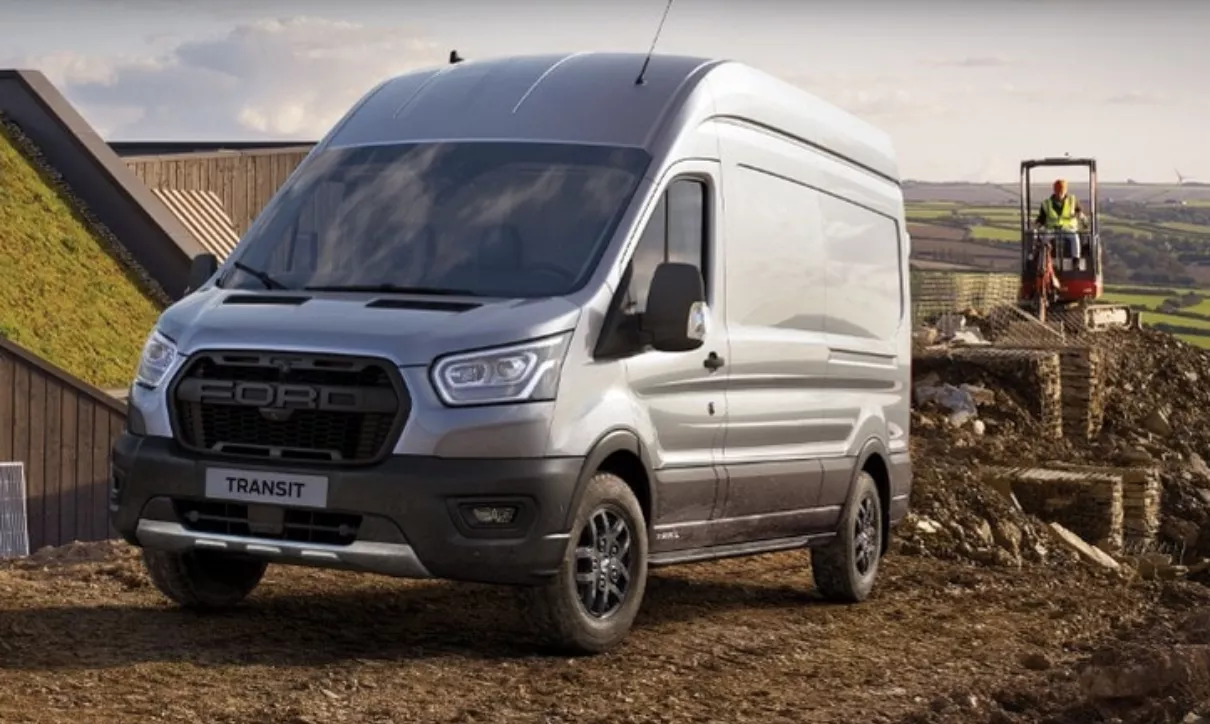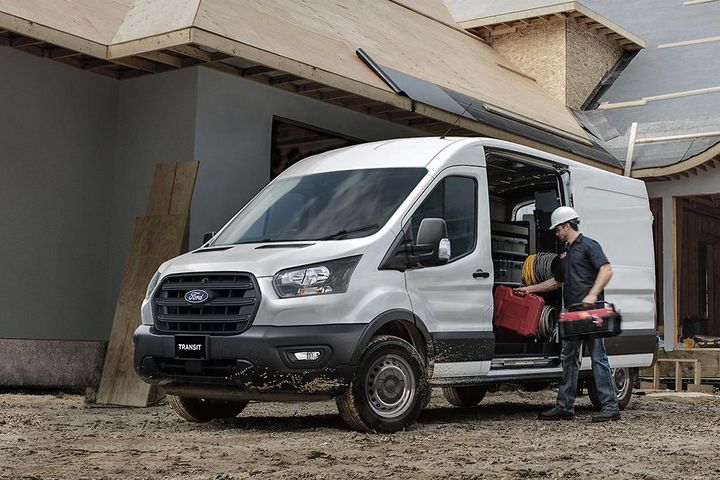


Towing capacity is a crucial consideration for anyone in the market for a capable van like the Ford Transit. Whether you're a business owner hauling equipment or an outdoor enthusiast towing recreational vehicles, understanding the Transit's towing capabilities is essential for safe and efficient operation. This comprehensive guide delves into the intricacies of the Ford Transit's towing capacity, covering everything from maximum limits to towing package requirements, weight ratings, payload distribution, and advanced towing technologies.

The Ford Transit's maximum towing capacity is an impressive 7,500 lbs (3,400 kg) when properly equipped. This figure varies depending on the specific model, configuration, and engine option chosen. With such a substantial towing capacity, the Transit proves itself as a capable workhorse, adept at hauling heavy loads or towing sizable trailers.
| Model | Maximum Towing Capacity |
|---|---|
| Ford Transit | 7,500 lbs (3,400 kg) |
| Mercedes-Benz Sprinter | 7,500 lbs (3,400 kg) |
| Ram ProMaster | 6,800 lbs (3,100 kg) |
To put this into perspective, a maximum towing capacity of 7,500 lbs allows the Transit to handle a wide range of towing scenarios, including:
Enclosed trailers transporting equipment or cargo
Landscaping or construction equipment
Small to medium-sized camper trailers or toy haulers
Boats, jet skis, or other recreational vehicles
While the Ford Transit boasts an impressive maximum towing capacity, achieving this capability requires the installation of the Trailer Tow Package (Option Code 53B). This package is essential as it includes critical components that enable safe and efficient towing.
The Trailer Tow Package equips the Transit with:
A frame-mounted hitch receiver
A wiring harness specifically designed for towing
The tow/haul mode, which adjusts the transmission's shift points and provides engine braking assistance, enhancing control and stability when towing heavy loads.
In addition to the Trailer Tow Package, Ford may recommend the use of a weight-distributing hitch for heavier trailers. This accessory helps ensure proper load distribution and handling, reducing the strain on the vehicle and improving overall towing performance.
The Gross Combined Weight Rating (GCWR) is a critical figure to consider when towing with the Ford Transit. It represents the maximum allowable weight of the loaded vehicle and trailer combined. For the Transit, the GCWR ranges from 10,800 lbs (4,900 kg) to 15,000 lbs (6,800 kg), depending on the specific model and configuration.
| Model | GCWR Range |
|---|---|
| Ford Transit | 10,800 lbs (4,900 kg) - 15,000 lbs (6,800 kg) |
Exceeding the GCWR can have severe consequences, compromising safety and potentially leading to legal issues. It's crucial to stay within the specified GCWR to maintain safe and legal operation. Factors such as the weight of the cargo, passengers, and any additional equipment must be taken into account when calculating the total combined weight.
Proper weight distribution is essential for safe and efficient towing. Ford provides specific recommendations for trailer tongue weight and cargo weight distribution within the trailer.
Ford recommends that the trailer tongue weight, which is the downward force exerted by the trailer on the hitch, should be approximately 10% of the total loaded trailer weight. This ensures that the trailer's weight is distributed evenly and doesn't place excessive strain on the vehicle's suspension or hitch.
For example, if the total loaded trailer weight is 5,000 lbs, the recommended trailer tongue weight would be approximately 500 lbs (10% of 5,000 lbs).
In addition to the trailer tongue weight, the distribution of cargo weight within the trailer itself is equally important. Ford recommends distributing the cargo weight evenly, with approximately:
60% of the allowable cargo weight in the front half of the trailer
40% of the allowable cargo weight in the rear half of the trailer
This balanced distribution helps maintain proper handling characteristics and prevents the trailer from becoming unstable or difficult to control.
The Ford Transit is equipped with several advanced towing features and technologies designed to enhance performance, safety, and control when towing.
The Trailer Sway Control system uses sensors to detect any excessive swaying or oscillation of the trailer. If detected, it selectively applies the brakes and reduces engine torque to help stabilize the trailer and regain control.
The optional Integrated Trailer Brake Controller allows for smooth and effective trailer braking by powering the trailer's electric or electric-over-hydraulic brakes. It helps reduce stopping distances and provides better control, especially when towing heavy loads or descending steep grades.
The Tow/Haul Mode is a key component of the Trailer Tow Package. This mode adjusts the transmission's shift points and provides engine braking assistance, enhancing control and stability when towing. It helps prevent excessive gear hunting and provides a smoother, more confident towing experience, especially in hilly or mountainous terrain.

To ensure safe and efficient towing with the Ford Transit, it's essential to follow these tips and best practices:
Check the trailer hitch, lights, electrical connections, and tire pressures on both the vehicle and the trailer.
Ensure that everything is in proper working order to prevent potential issues and ensure a safe and trouble-free trip.
Distribute the load evenly and keep the center of gravity low to maintain proper handling characteristics and prevent instability.
Secure the cargo properly using tie-downs or straps to prevent shifting or movement during transit, which could potentially cause dangerous situations.
Exercise caution and adjust your driving techniques accordingly when towing.
Use extra care when accelerating, passing, or braking, allowing for additional distance due to the added weight and length of the trailer.
Engage the tow/haul mode and use engine braking when descending steep grades to maintain better control.
Avoid using cruise control when towing, especially in hilly or inclement weather conditions.
Maintaining manual control over the vehicle's speed and braking can help you respond more effectively to changing road conditions or potential hazards.
Monitor the engine temperature and take breaks as needed to allow the engine to cool down, especially in hot weather or at high altitudes.
Overheating can lead to serious engine damage and should be avoided at all costs.
Understanding the Ford Transit's towing capacity is crucial for anyone considering this versatile van for their towing needs. With a maximum towing capacity of 7,500 lbs when properly equipped, the Transit proves itself as a capable workhorse, able to handle a wide range of towing scenarios. However, achieving this capability requires adhering to towing package requirements, respecting weight ratings, and following best practices for load distribution and driving techniques. By leveraging the Transit's advanced towing technologies and heeding expert advice, you can confidently and safely haul the loads you need for your business or recreational activities.
The Ford Transit has a maximum towing capacity of 7,500 lbs (3,400 kg) when properly equipped with the Trailer Tow Package. This allows it to tow a wide range of trailers and equipment.
Yes, the Trailer Tow Package (Option Code 53B) is required to achieve the maximum 7,500 lbs towing capacity. This package includes a hitch receiver, wiring harness, and tow/haul mode.
The GCWR for the Ford Transit ranges from 10,800 lbs (4,900 kg) to 15,000 lbs (6,800 kg), depending on the specific model and configuration. Exceeding the GCWR can compromise safety.
Ford recommends that the trailer tongue weight should be approximately 10% of the total loaded trailer weight. This ensures proper weight distribution and handling.
Ford recommends distributing cargo with 60% of the weight in the front half of the trailer and 40% in the rear half. This balanced distribution helps maintain stability and control.
Trailer Sway Control uses sensors to detect excessive trailer sway or oscillation. It then applies the brakes and reduces engine torque to help stabilize the trailer and regain control.
Yes, the Ford Transit offers an optional Integrated Trailer Brake Controller. This system powers the trailer's electric or electric-over-hydraulic brakes for improved braking performance and control.
The Tow/Haul mode adjusts the transmission's shift points and provides engine braking assistance. This enhances control and stability when towing heavy loads, especially in hilly or mountainous terrain.
No, it is recommended to avoid using cruise control when towing, especially in hilly or inclement weather conditions. Manual control over speed and braking is preferred for better response to changing road conditions.
Monitoring engine temperature and taking breaks as needed is crucial to prevent overheating, which can lead to serious engine damage. This is especially important in hot weather or at high altitudes.

Sarah isn't your average gearhead. With a double major in Mechanical Engineering and Automotive Technology, she dived straight into the world of car repair. After 15 years of turning wrenches at dealerships and independent shops, Sarah joined MICDOT to share her expertise and passion for making cars run like new. Her in-depth knowledge and knack for explaining complex issues in simple terms make her a valuable asset to our team.



